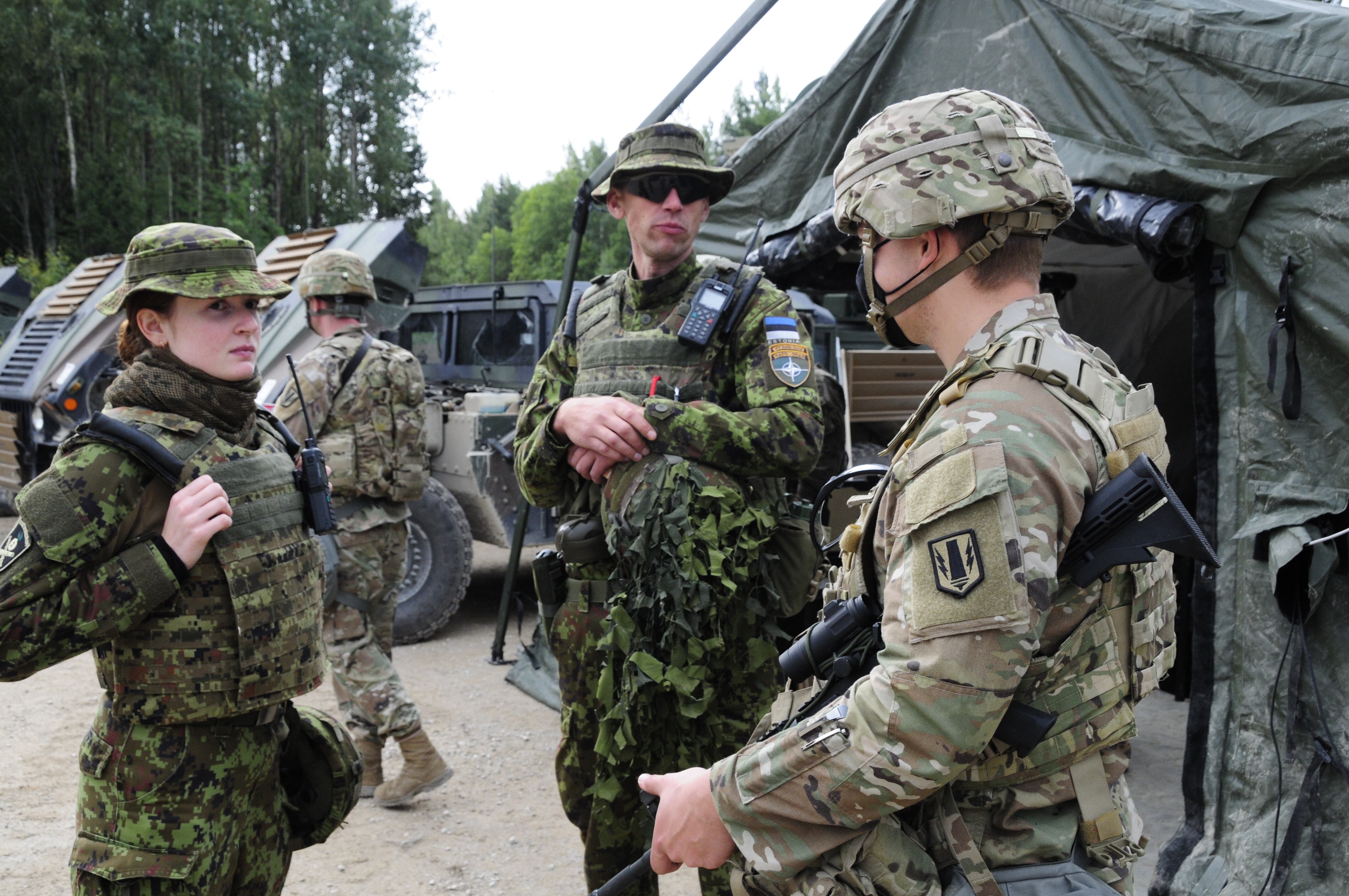The Army this week kicked off a key element of Defender Europe 2021, a series of Army-led military exercises across Europe and Africa, as the United States works out ways to fight battles alongside allies from Estonia to Morocco.
This portion of the larger Defender Europe 2021 exercise has been dubbed “Fires Shock,” service officials told reporters in a call Wednesday.
The annual Defender Europe exercise, in the works for more than a year, follows a scaled-down version, due to the COVID-19 pandemic, that took place last year. But it comes shortly after Russia sent as many as 100,000 troops to its border with Ukraine and Crimea, an area Russia forcibly annexed from Ukraine in 2014.
RELATED

Russia did pull back some of its soldiers, but as of this week 80,000 troops remain.
Officials within President Biden’s administration told the New York Times that Russian personnel were kept on sight to show the United States and its NATO allies that Russia can match the number of troops taking part in the Defender Europe exercise. Troops there now would far outnumber the estimated 28,000 soldiers from various countries participating in Defender Europe.
Military officials who spoke with the press about the “Fires Shock” portion of the larger exercise declined to discuss Russia specifically, deferring to the U.S. State Department.
“(The exercise) is not conducted in direct response to any specific threat or adversary,” said Brig. Gen. Chris Norrie, head of the U.S. Army’s 7th Training Command in Grafenwoehr, Germany.
On the same call, Maj. Gen. Indrek Sirel, deputy commander of Estonian defense forces, also waved off specific references to Russia. But did hint at the deterrence factor.
Part of Estonia’s role in a potential conflict is to receive Army airborne forces to help them fight off an adversary.
“This is a demonstration of allied cohesion, demonstration of our will, as well as improving our skills on all levels,” Sirel said.
While there was no special reason for the first of the exercises to start in Estonia, “All of them are signals, all of them are deterrence messages,” he said.

For years, Army officials have pressed to improve long range precision fires capabilities in Europe, especially to counter the out-distancing fires and defenses Russia has developed and deployed along its borders with Eastern European rivals.
Soldiers, primarily with the 41st Field Artillery Brigade, will deploy their precision-strike Multiple Launch Rocket Systems to “soften” the area ahead of airborne unit forcible entry exercises this week in Estonia.
The unit and other fires elements in U.S. Army Europe and Africa will also bring out the big guns — with a little help from U.S. Air Forces Europe — in Germany and Poland through the rest of May for Exercise Dynamic Front; in Bulgaria for Exercise Saber Guardian in early June; and in Morocco from early to mid-June for Exercise African Lion.
This kind of work, especially with other nations’ militaries, helps the Army work out how best to use sensors and shooters, especially when calling for fires with partner or allied forces, Norrie said.
“It allows us to best understand how to position sensors and then to test the entire sensor-shooter linkage,” Norrie said. “You’ve got to practice this. It’s critical for us to routinely exercise Army joint fires and integration with our allies.”
Col. Daniel Miller, who heads the 41st FAB, told reporters that procedures and digital communications between U.S. and allied systems are the same, regardless of system type or language spoken by the operators.
But soldiers still need to do the work of loading gear, hauling it to the site, shooting accurately and moving rapidly to another location. And that has to be done with partner forces.
As the Army only forward stationed, organic long-range precision fires rocket unit in Europe, Miller called his brigade the “action arm” of the fires exercises running now through mid-June.
By integrating their fires capability with units from Norway to southern Europe, his soldiers and their counterparts will pass targeting data to rocket systems, evaluating the best ways to sense and strike for current and likely future operations.
Planning for the operation began more than a year ago. In March, equipment in the United States was loaded aboard ships to arrive in Albania, Croatia, Germany and Greece, officials said.
Soldiers with the 41st FAB got a dress rehearsal last year when they transported their missile systems from Germany to Estonia in August for the first time, Sirel said.
“These exercises demonstrate our ability to command and control long-range fires across continents, using a variety of networked and multi-domain communications platforms,” Norrie said.
Todd South has written about crime, courts, government and the military for multiple publications since 2004 and was named a 2014 Pulitzer finalist for a co-written project on witness intimidation. Todd is a Marine veteran of the Iraq War.





